37 cooking mistakes that could be RUINING your leftovers
Leftover mistakes to leave behind

Brent Hofacker/Shutterstock
When you have a fridge full of leftovers, it's a shame to waste even a morsel. But reheated and rehashed dishes can be a little... disappointing. Many people make the same mistakes when heating up leftovers, especially because each food needs to be treated differently to get the best results. But by using the right tricks and hacks for the right foods, you can bring pretty much any dish or ingredient back to life – ensuring it's just as tasty as it was the first time around (or perhaps even tastier).
Read on to discover 37 leftover foods you're probably reheating or using wrong – counting down to the food that people most commonly make mistakes with.
We've based our ranking on how commonly each food is reheated and/or used up wrongly, taking into account expert advice, research and the experience of our team. This list is unavoidably subjective.
37. Cheese
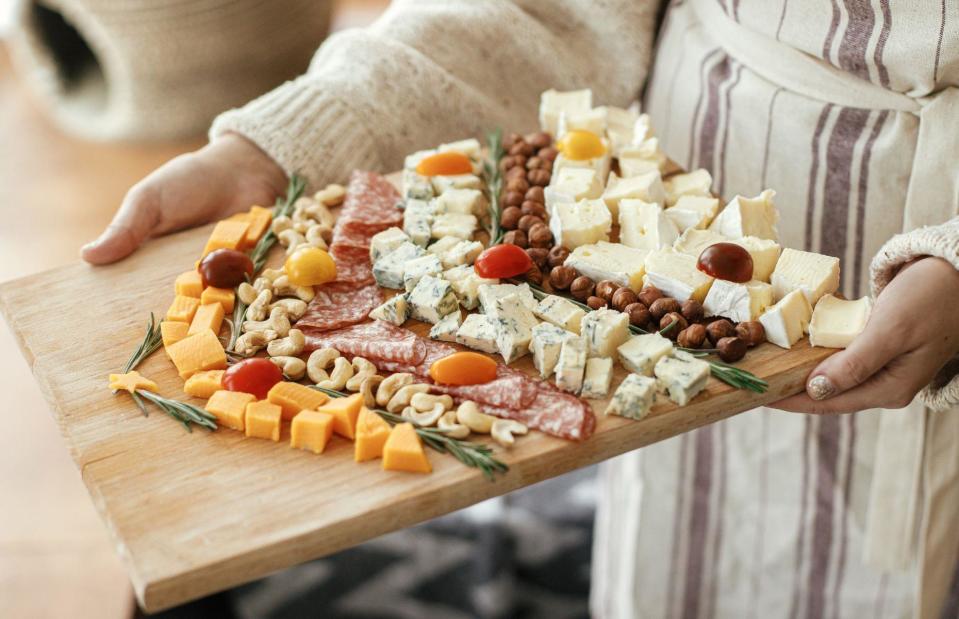
Bogdan Sonjachnyj/Shutterstock
After serving up a cheese board, you can be left with small chunks of lots of different cheeses – so you might be tempted to throw them out. Luckily, there are endless uses for leftover cheese, so those tasty morsels don't have to go to waste. First and foremost, hard cheeses like Cheddar freeze very well; just pack them in a resealable plastic bag, with as much air removed as possible. Otherwise, a mix of cheeses would be ideal in mac 'n' cheese, a cauliflower cheese casserole, a potato gratin or even a fondue. Got a few crumbles of Stilton left? Leftover blue cheese is especially good for enriching vegetable soups.
36. Nuts

Nitr/Shutterstock
Nuts are a delicious snack, but it’s easy to buy too many. When you find yourself with more than you know what to do with, don’t resort to throwing them to the birds and squirrels; they’d be perfect mixed into (or scattered over) a curry, or used as a crunchy topping for soup. Prefer nuts in sweet recipes? There are so many things you could make or bake with them, from coffee and walnut cake to pralines and pecan pie.
35. Cookies
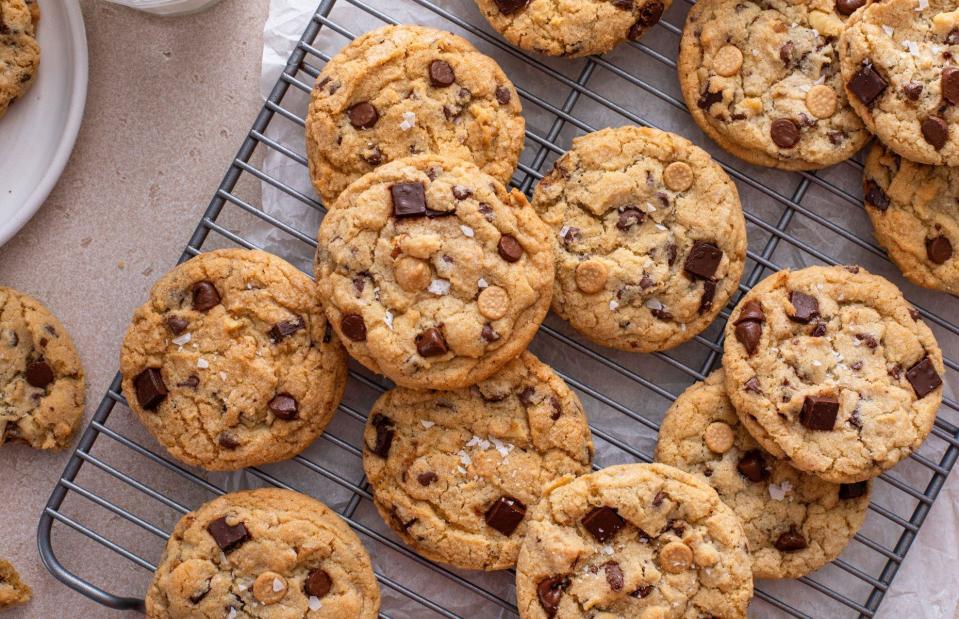
Elena Eryomenko/Shutterstock
As delicious as freshly baked cookies are on day one, they can become a bit like rock cakes by day two – and not in a good way. Don’t throw them away, though; simply wrap up a few cookies at a time in dampened paper towels, pop them in the microwave and heat them up for less than 10 seconds. They should be as soft and warm as if they were fresh out of the oven.
34. Corn on the cob

Esin Deniz/Shutterstock
If you’ve ended up with too much corn on the cob, you might be wondering what to do with it. There’s no need to throw it out, but the microwave or oven may not be your best option for heating it back up. Instead, place your cobs in boiling water for a minute or two to reheat them whole. Alternatively, remove the kernels with a knife, then either throw them into a salad or make corn fritters.
33. Gravy
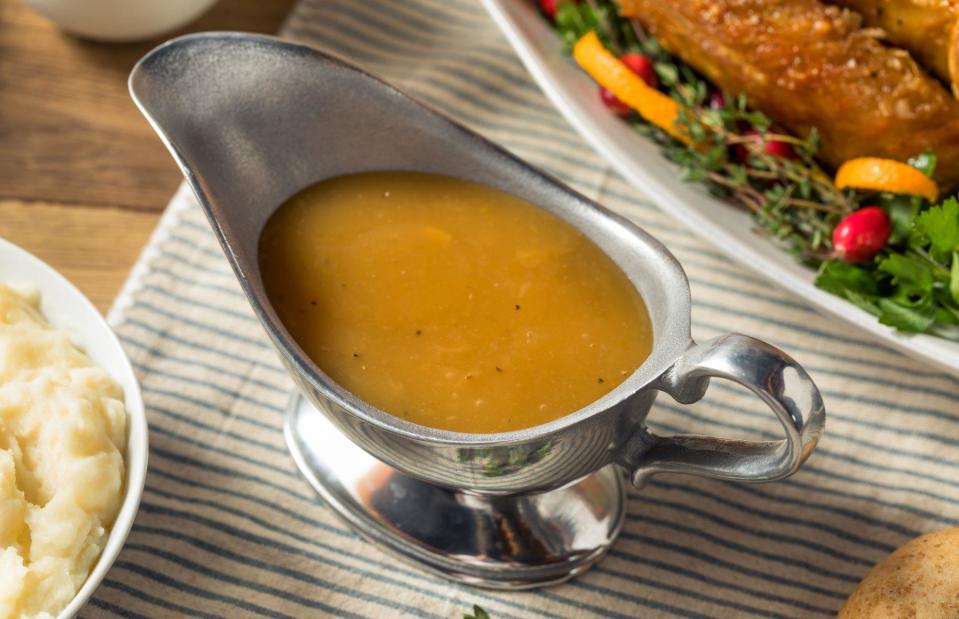
Brent Hofacker/Shutterstock
Extra gravy doesn't have to go down the drain. If you’re lucky enough to have some left over, the best way to bring it back to life is to heat it low and slow in a pan until it's warm and bubbling. If you don't plan on eating your gravy within a few days, freeze it in a sealed plastic bag, or even a couple of ice cube trays – it'll stay delicious for three to six months, and would be great for adding extra flavour to soups, stews and sauces.
32. Fresh herbs
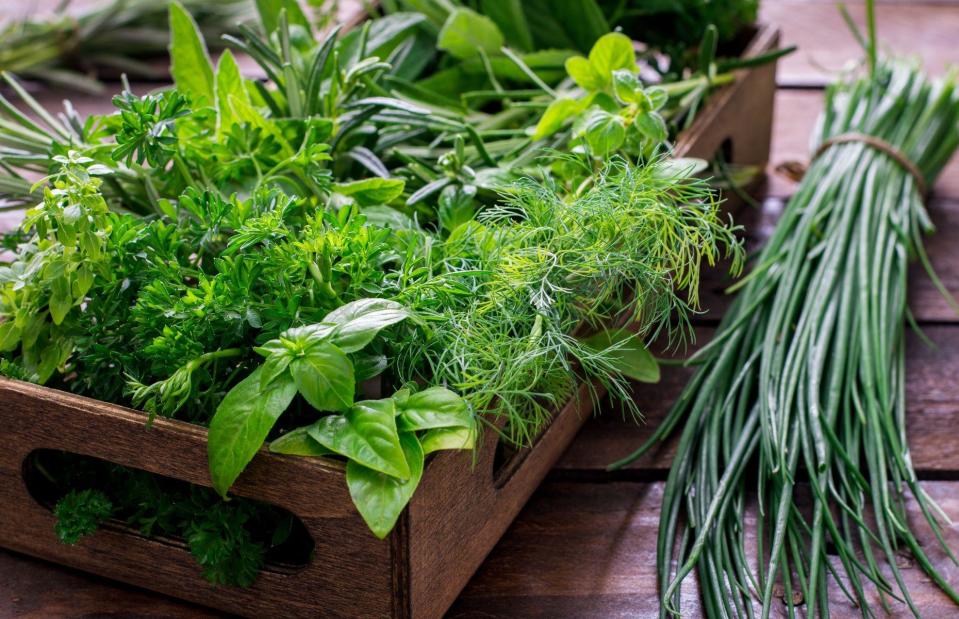
NSphotostudio/Shutterstock
If you’ve got a bunch of fresh herbs that have seen better days, you might be tempted to throw them away – but don’t. You can easily, and quickly, dry out soft herbs like basil, coriander, chives, tarragon, mint and parsley. All you need to do is put them in the microwave (yes, really). Discard any rotten leaves, place your herbs between two paper towels and blast them on full heat for 30-second intervals until they dry out completely. Magic!
31. Quesadillas
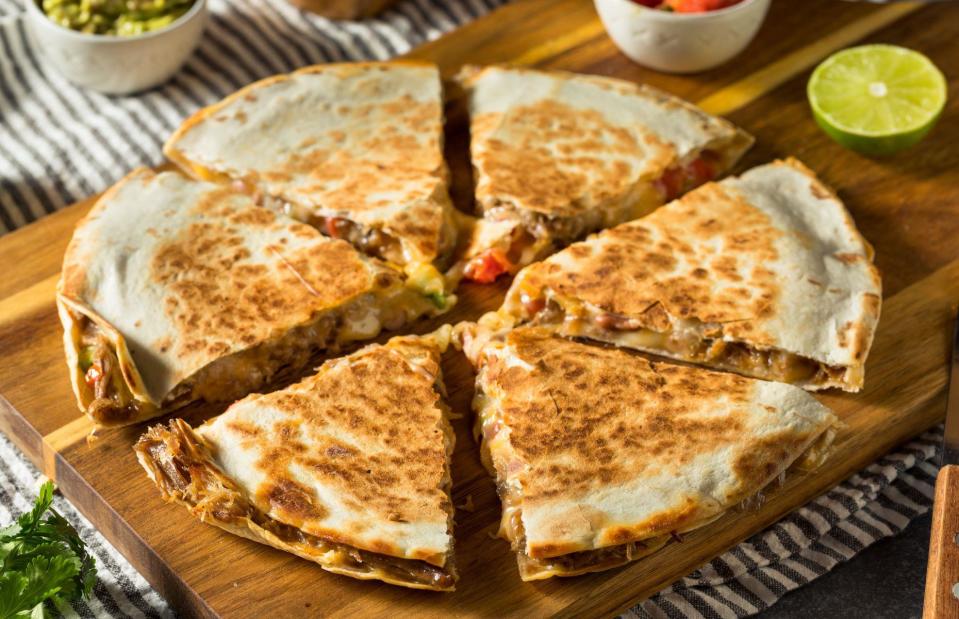
Brent Hofacker/Shutterstock
Nobody likes a soggy quesadilla – so if you have one left over that you want to heat up, ignore the call of the microwave, which will leave it disappointingly limp. There's an easy way to keep this Tex-Mex classic crispy: simply heat it up in a non-stick pan for two minutes on each side, until the cheese melts and each side browns up nicely.
30. Bananas

Lynne Ann Mitchell/Shutterstock
You’re missing a trick if you’re only using overripe bananas for banana bread. While it's a great go-to, it’s really not your only option. Bananas that are past their best also work well in other baked goods, including muffins and banana sponge puddings. They’re perfect for ice cream, smoothies and pancakes, too – or you could simply bake them, stuffed with chocolate and wrapped in foil. If it’s barbecue season, try cooking them over a hot grill.
29. Scrambled eggs
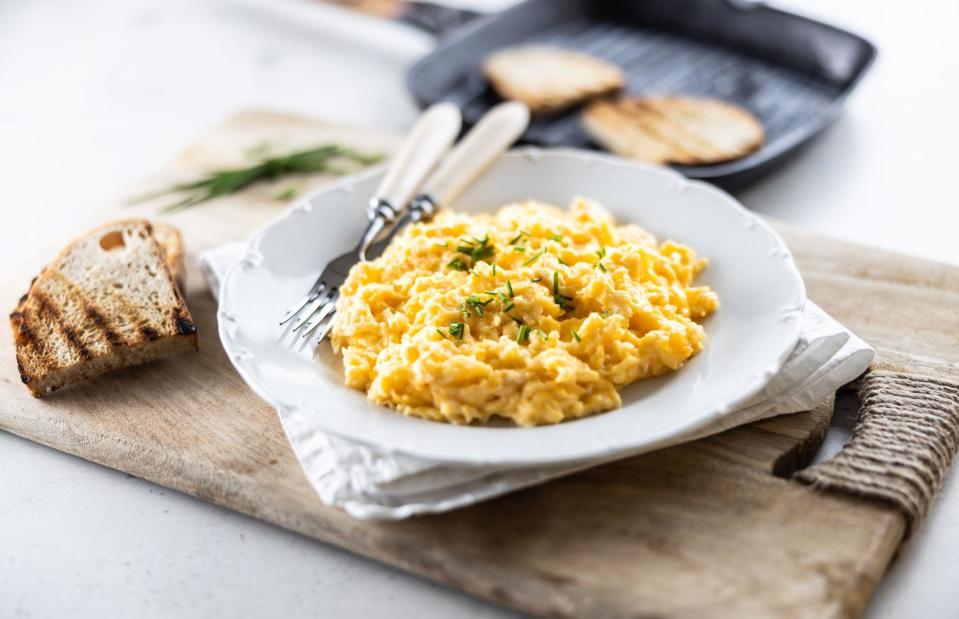
Marian Weyo/Shutterstock
The best way to reheat leftover scrambled eggs is in the microwave – but don’t just throw them in and hope for the best. Add a little bit of water to prevent them from drying out, and be sure to only cook the eggs in short bursts of 20 seconds to prevent them from overheating. To finish, stir in a knob of butter for extra creaminess.
28. Stuffing
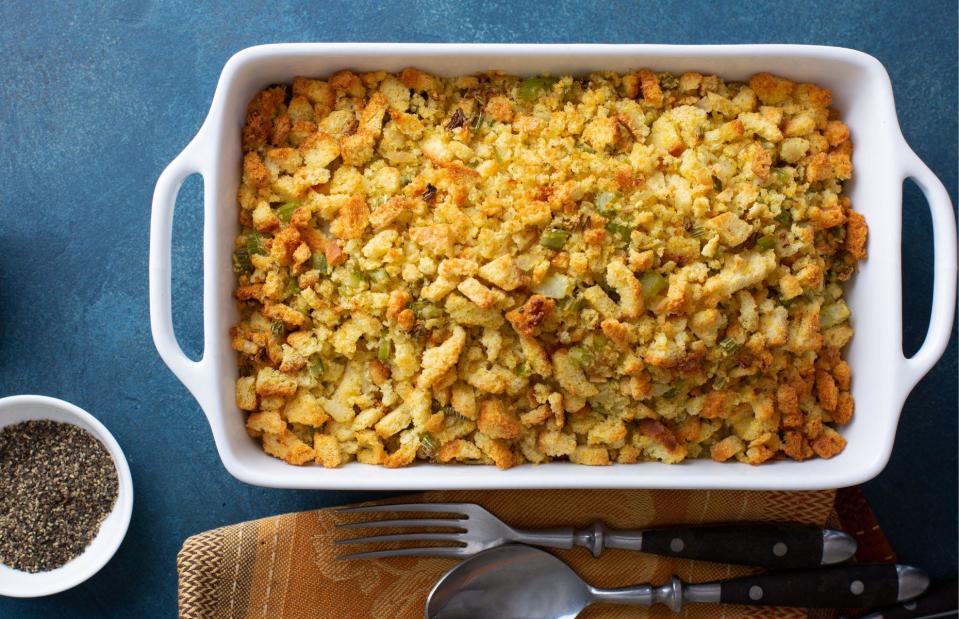
Elena Veselova/Shutterstock
This crowd-pleasing side is wonderful with roasted meats. However, even the tastiest stuffing will become dense and dry after a night in the fridge. To revive it, add it to a saucepan, stir in some stock and a little butter, then heat it gently on the hob for a few minutes. You could also fry chunks or balls of stuffing for a crispy, caramelised treat. If you can resist eating it straight from the pan, it would be sensational in a leftover ham, chicken or turkey sandwich.
27. Ham
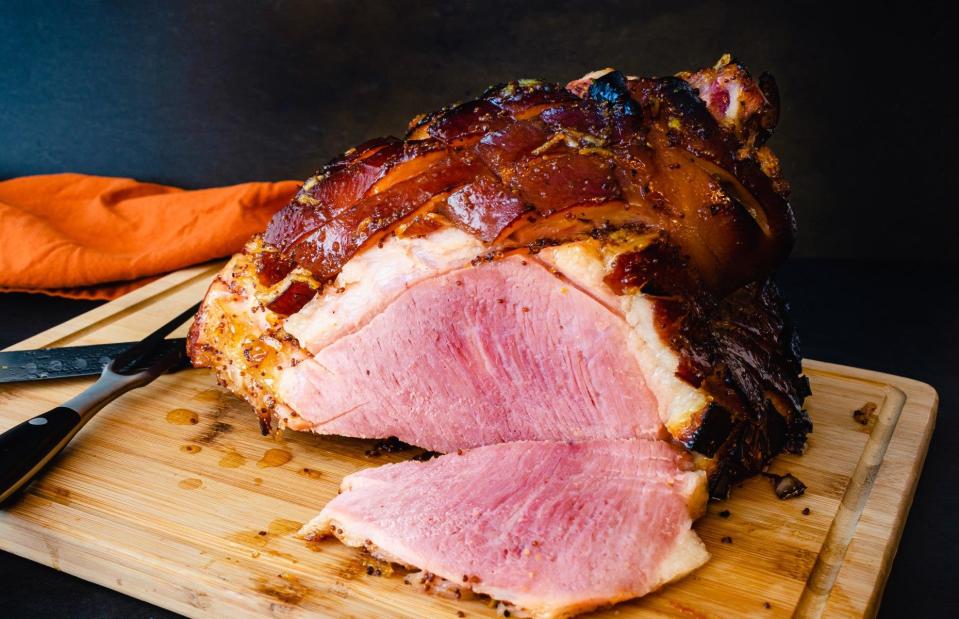
Candice Bell/Shutterstock
Leftover ham is delicious cold, but there's no need to limit its use. If you’re keen to eat your leftover glazed ham hot, you just need to avoid drying it out. The best way to reheat it is to place a chunk on a rack in a roasting pan, add water or stock to the bottom of the pan, cover it tightly with foil, then cook it in the oven for 20-30 minutes, depending on the size of the piece. Another tasty way of using up leftover ham is slicing it thinly, frying it until crisp, then adding it to spaghetti carbonara or mac 'n' cheese.
26. Crumbles, crisps and cobblers

hiphoto/Shutterstock
Topping fruit with a combination of butter, sugar and flour (and sometimes oats) is one of the easiest and best ways to create a comforting dessert. But what if you want to reheat a serving without that lovely, crispy top going doughy and soft? Simply heat your oven or air fryer to 170°C/150°C fan/340°F/gas mark 3 and bake your crumble, crisp or cobbler for 15-20 minutes to keep it crunchy. Of course, if you like it on the softer side, the microwave is your best bet.
25. Stir-fries

Metamore Studio/Shutterstock
It's all too easy to throw a bowl of leftover stir-fry (whether with rice or noodles) into the microwave – and that's perfectly fine, if you don’t mind it going a bit dry. But if you’d prefer your stir-fry to taste just like it did yesterday, it’s best to reheat it the same way you cooked it the first time. Toss your stir-fry in a wok or frying pan on a high heat for a few minutes, adding a little water or sauce for moisture, and you’ll get a much better result.
24. Steak
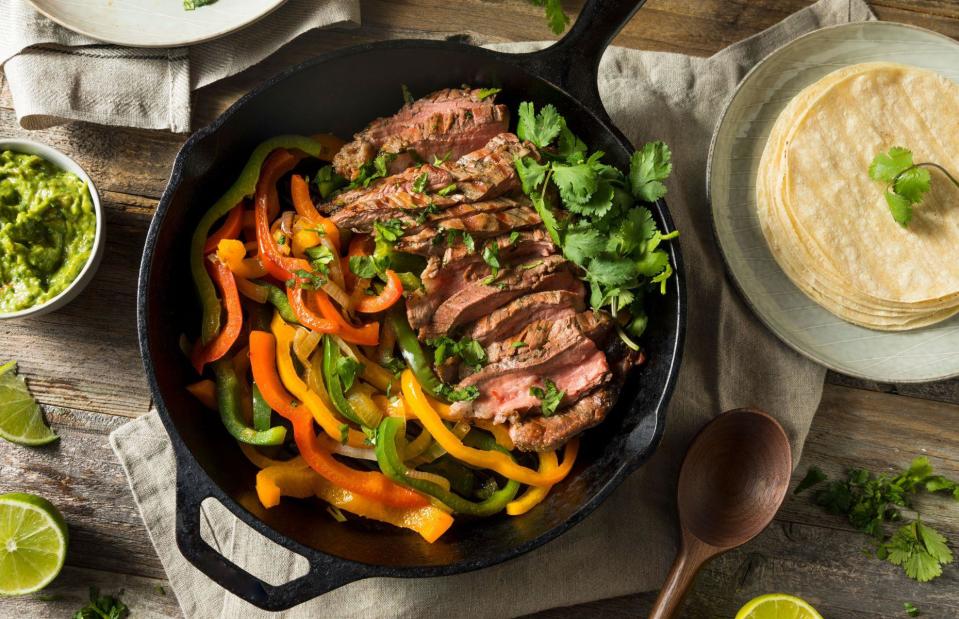
Brent Hofacker/Shutterstock
If you’re not a fan of well-done steak, don’t even attempt to reheat it in the microwave. Instead, heat up a pan with some butter, then fry your steak gently for a minute or two on each side. Another great way to use up cooked steak is to cut it into slices and flash-fry it before adding it to fajitas, tacos or a tasty stir-fry.
23. Pasta in tomato sauce
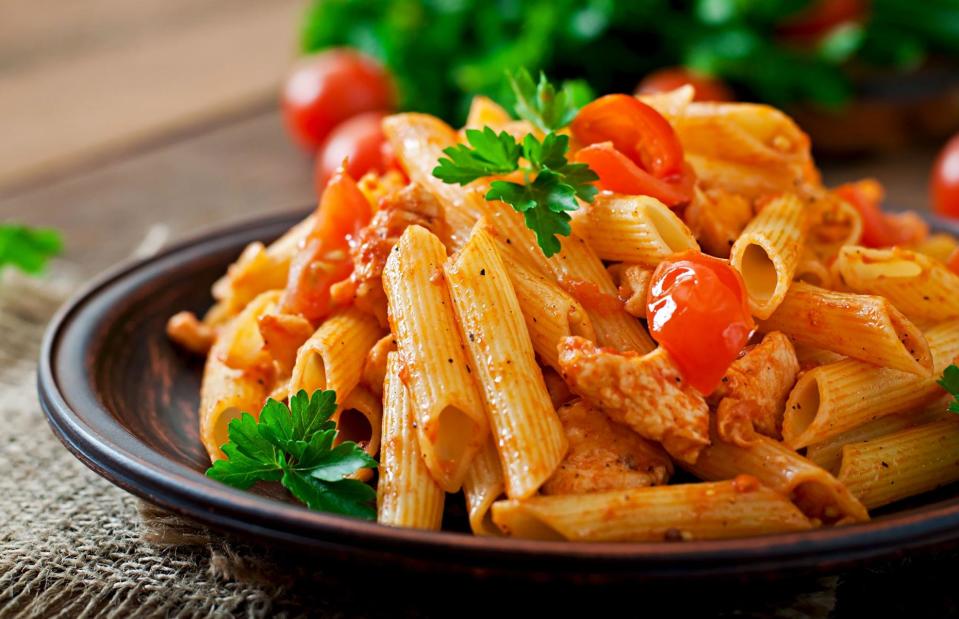
Timolina/Shutterstock
Pasta in rich tomato sauce is one of many dishes that taste better the day after they're cooked. You might be tempted to just microwave it to save time, but the result can be dry and a little bland. Try frying it instead; if you cook it in a pan with some butter, the tomato will caramelise, and the flavour will become much stronger. Finish it off with a little fresh Parmesan for an indulgent treat.
22. Mashed potatoes
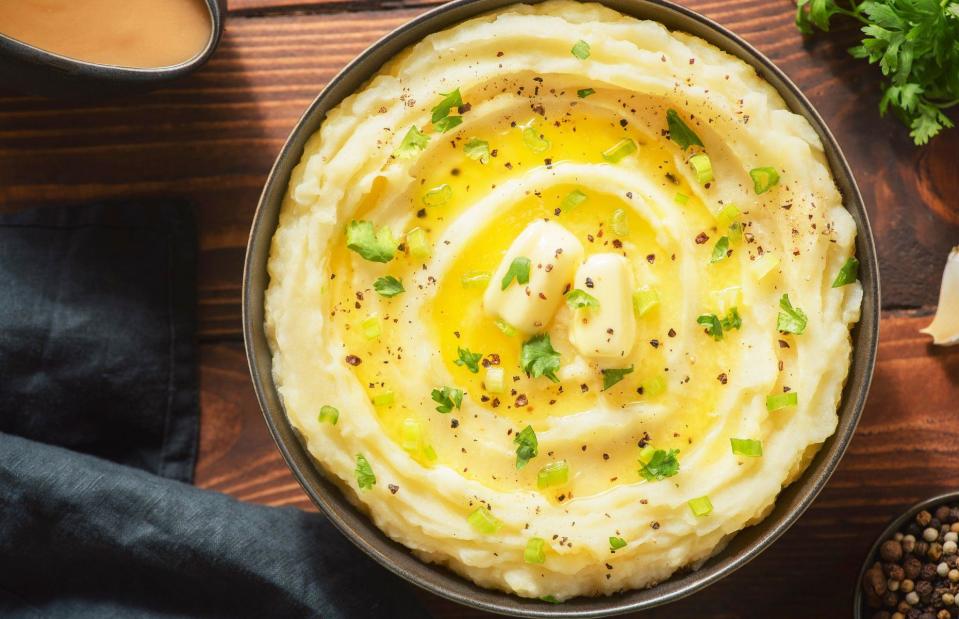
Dina Saeed/Shutterstock
Opinions vary on the best way to reheat mashed potatoes. Some are firmly in the microwave camp, while others recommend heating them in a bowl placed over simmering water. But regardless of the method that works best for you, the key is to add more milk, cream or even just a knob of butter. There are plenty of ways to transform leftover mashed potatoes into something new, too. Why not use it to make homemade gnocchi or potato pancakes, or turn it into a pie topping?
21. Grains
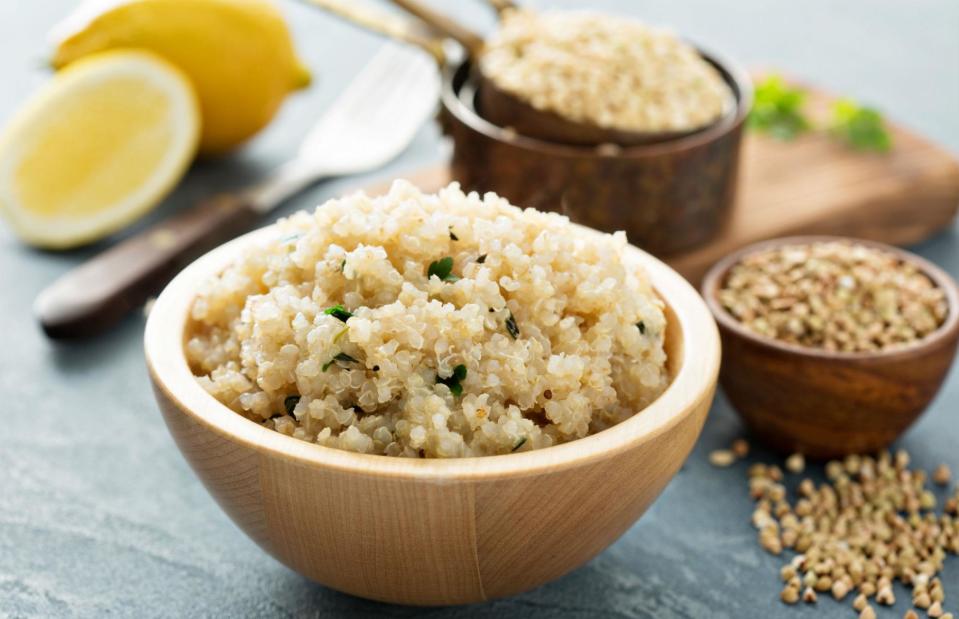
Elena Veselova/Shutterstock
Much like rice, you can reheat grains like quinoa, bulgur and farro in the microwave – but don't make the mistake of just sticking a bowlful of leftovers in and hoping for the best. First, dampen a paper towel and place it on top of the bowl; this will prevent the grains from sticking together and becoming dry.
20. Chicken wings
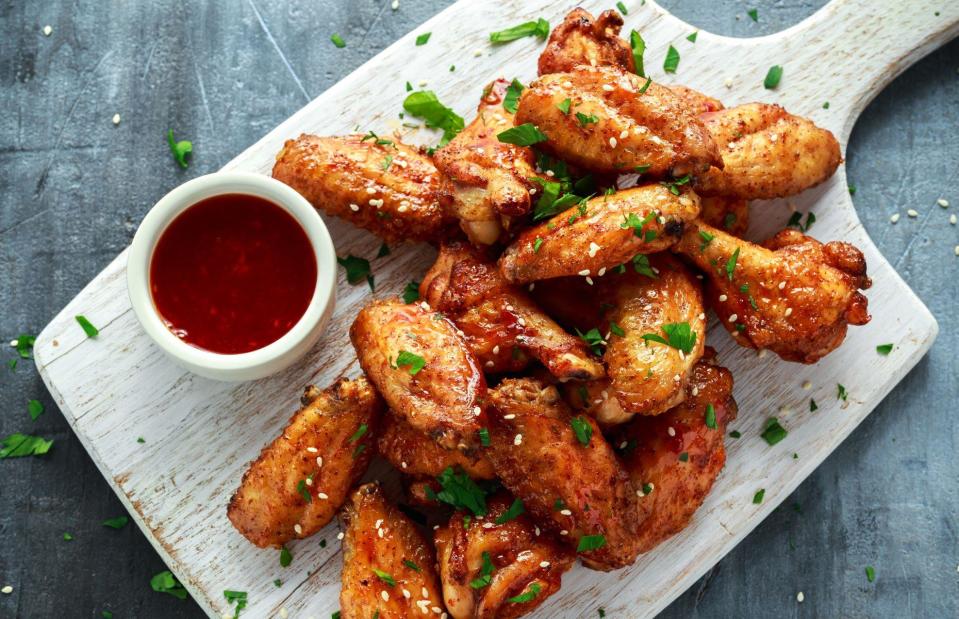
DronG/Shutterstock
Don't be tempted to simply microwave leftover chicken wings. For hot and crispy chicken wings on day two (or even day three), press them inside a griddle or a panini maker – the hot iron plates will give the skin that extra crispiness, without making the wings soggy. Alternatively, an air fryer will do the job brilliantly. Preheat your machine to 180°C (35°F) and stick the wings in for around 10 minutes, until hot and crisp (be sure to check on them halfway through and give the basket a little shake).
19. Fried chicken
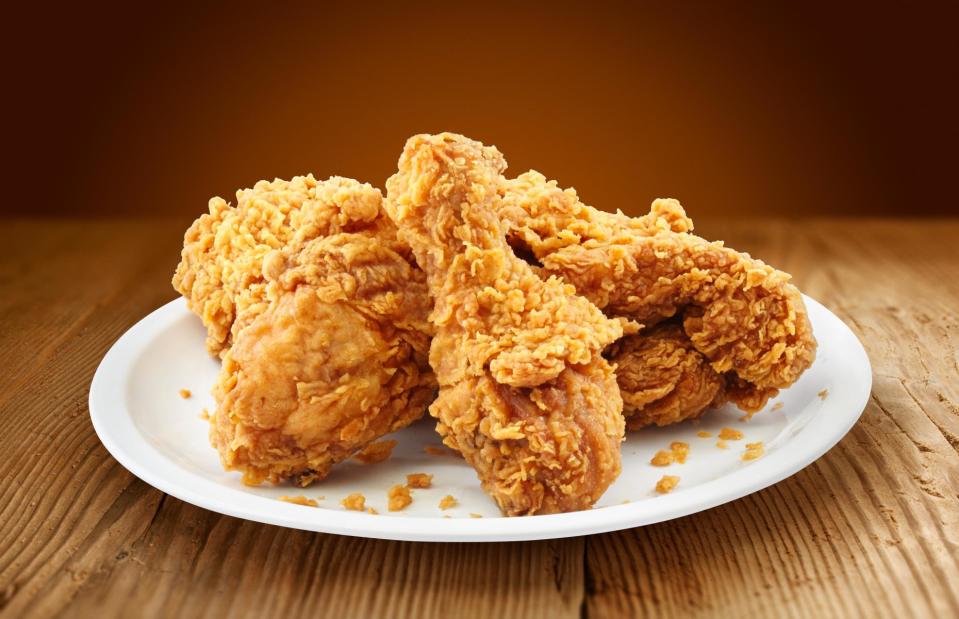
Fierman Much/Shutterstock
Short of throwing it away, one of the worst things you can do with leftover fried chicken is reheat it in the microwave. The batter or breading will transform into a soggy, flabby mess, and the meat itself will be dry. Basically, the exact opposite of what you're looking for with fried chicken. Instead, give it a blast in the air fryer – preheated to 200°C (390°F) – for around 8-10 minutes. Alternatively, put in a hot oven for around 20 minutes to give it an extra touch of crispiness.
18. Mac 'n' cheese

vm2002/Shutterstock
Reheating leftover mac ‘n’ cheese and other cream-based pasta dishes in the microwave or oven can dry them out. The solution? Just stir through a little butter and some milk or crème fraîche first. Adding the extra dairy will prevent the dish from drying out and make sure it’s extra creamy.
17. Lasagne

Mironov Vladimir/Shutterstock
Reheating lasagne in the microwave is possible, but challenging. It's tough to get it to heat evenly because you can’t stir it, so getting it hot in the middle is tricky – plus, there’s a chance it will dry out. You can reheat it in the oven, until brown and bubbling. But this can take as long as when you first cooked it, so reheating in an air fryer is a more economical option. Transfer your slice to an oven-safe dish or air-fryer liner that fits in your machine's basket, cover loosely with foil and cook at 175°C (350°F) for 5-6 minutes.
16. Plain pasta
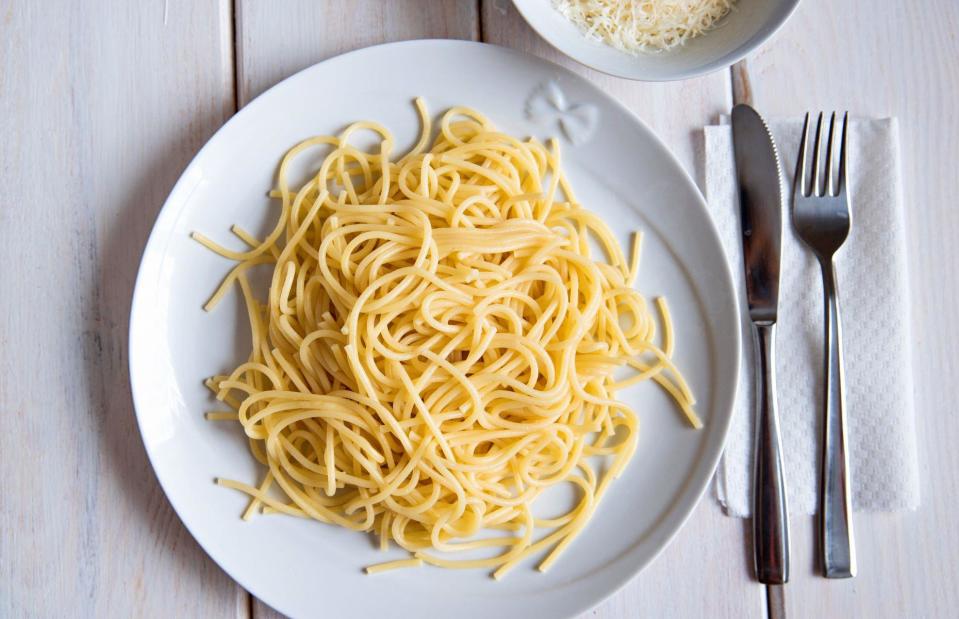
Natali LaRush/Shutterstock
The main problem with reheating cooked pasta is that it tends to turn rubbery quickly. If you’re just looking to microwave some pasta without the sauce, try arranging it in a ring shape around a plate, leaving a hole in the middle. Leaving space will provide more surface area, allowing the pasta to heat up more evenly than it would if left in a pile. Alternatively, you could add cooked pasta straight into a sauce and allow it to warm up gently in the pan.
15. Rice

Ravsky/Shutterstock
Cooked rice tends to stick together and form one dry lump by day two, but it can be rescued. Just dampen a paper towel and place it on top of the rice before heating it in the microwave; the water in the towel will infuse moisture into the rice without making it too soggy. Keen to make something brand new? Cooked rice is ideal for making arancini balls or egg fried rice.
14. Vegetables

Dragon_Fly/Shutterstock
It's tempting to reheat your vegetables in the microwave, but it won't do them any favours on the taste front. Microwaved veggies can become soggy and limp – especially if they have a high water content, like courgettes and aubergines. Instead, put them on a tray and roast them in the oven with some seasoning, a drizzle of olive oil, and any extra herbs and spices you like.
13. Breaded or battered food

Fascinadora/Shutterstock
If you’re reheating onion rings, hash browns or any other kind of breaded or battered food, don't put them in the microwave – you'll end up with a soggy mess no one will want to eat. Heating breaded or battered leftovers through in an air fryer is your safest bet; simply preheat your device to 180°C (350°F) and cook them for around five minutes at a time, checking as you go. You want them to be heated all the way through, and nicely crisp. If you don’t have an air fryer, a blast under a medium-hot grill should do the trick.
12. Pies and pastries

from my point of view/Shutterstock
Even if you got your pie or pastry perfectly crisp the first time around, if there's too much moisture involved in the reheating process, it'll become squishy and unpleasant. The microwave isn’t a great idea here – use the oven or an air fryer instead. Don’t go too hot; 170°C/150°C fan/340°F/gas mark 3 should be enough to heat it through in the middle without burning your pastry.
11. Prawns

Prawns New Africa/Shutterstock
If you’ve ever attempted to reheat prawns, you’ll know that they can go rubbery pretty quickly. Microwaving leftover prawns is likely to produce that chewy and tough texture. Instead, try melting some butter over a low-medium heat, adding your prawns in a single layer so they don’t overlap, then heating them up a few minutes on either side. This should result in prawns that are heated through, yet still soft.
10. Soup
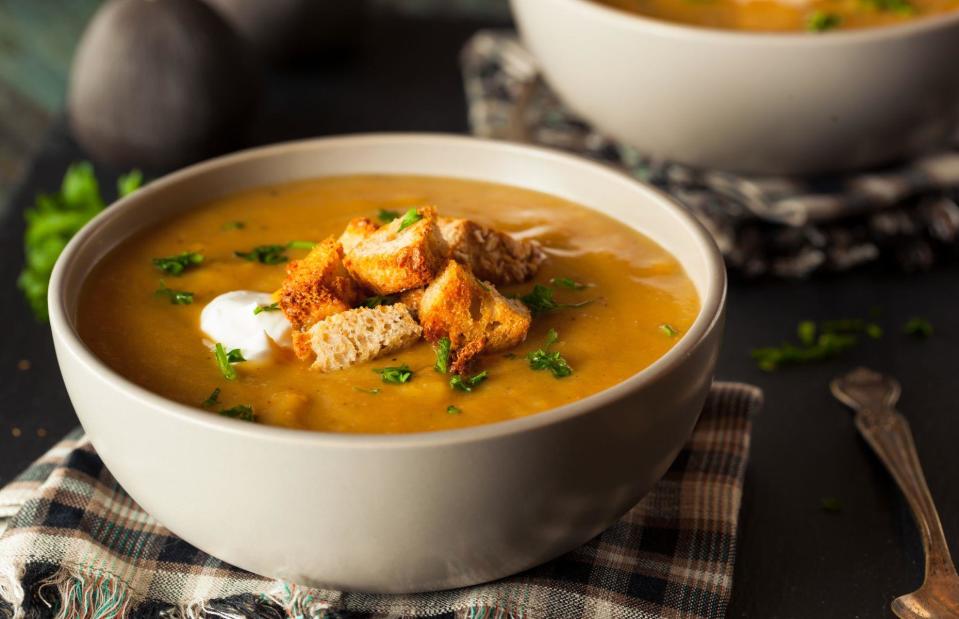
Brent Hofacker/Shutterstock
Ever tried reheating frozen soup and ended up with a mix of frozen lumps and boiling hot liquid? Soup congeals when it's frozen, and it won’t all cook at the same time. Try pouring a cup of hot water into the soup and stirring it through before reheating; this will thaw the frozen parts of the soup and allow for more even distribution of heat. For extra deliciousness, top your soup with fresh herbs, croutons or a drizzle of sour cream.
9. Waffles

baibaz/Shutterstock
When making a batch of waffles, it's better to use the batter in one go rather than keeping some for another day. If you can’t eat all the waffles you create, don’t worry. Just put your leftover waffles in the toaster to heat them up while keeping them crispy. It'll save messing around with your waffle maker again, too.
8. Baked potatoes

Brent Hofacker/Shutterstock
The microwave is a solid option for reheating a baked potato (just cover it with a damp paper towel to prevent it from drying out). However, for crispier skin, you might prefer to use an air fryer, if you have one. Heat it to 180°C (350°F) and cook your potato for about three minutes, until heated through. Leftover baked potatoes are perfect for making double-baked potatoes, too. Scoop out the inside, mix it with cream cheese, chives and pieces of cooked bacon, put the mixture back into the skin, then bake for about 15 minutes.
7. Turkey

Elena Shashkina/Shutterstock
Turkey can be infamously dry if roasted for too long, but it doesn’t always have to be. If you’re keen to reheat some turkey, try cooking it in a steamer basket – the moisture from the water will keep it juicy while cooking it through. Another easy solution is adding shredded turkey meat to a soup, curry or stew to revive the moisture. Alternatively, stuff it into a sandwich with cheese and salad.
6. Fries

Brent Hofacker/Shutterstock
Fries aren't known for their longevity. In fact, they tend to become dry and chewy as soon as they go cold. But don't throw them away; they can be freshened up if you cook them right. Don’t just whack them in the microwave, though – put them in for a couple of minutes to heat through, then pop them in a sandwich press to ensure they’re hot and crispy. Alternatively, a few minutes in an air fryer will crisp them up to perfection.
5. Burgers

Paulo PFZ Studio/Shutterstock
Burgers have several elements that need to be treated differently, so trying to reheat a whole burger at once isn’t going to give you great results. The best way to handle a burger you want to reheat is to take it apart, and treat each part differently: set the salad to one side, scrape off any sauce, toast the bun and fry the patty in a pan with a little water to help it stay moist.
4. Chicken

Elena Veselova/Shutterstock
It's so easy to dry out chicken when you cook it the first time, let alone when reheating it. Instead of reheating leftover chicken on its own, the trick to making it nice and juicy is to cook it with some stock. Try putting just a little stock in a bowl with your chicken before reheating it in the microwave – the saltiness and moisture will give it plenty of flavour and help to prevent the meat from drying out. Alternatively, you can just cook the meat as part of a soup, broth or stew to restore its moisture.
3. Fish

Elena Eryomenko/Shutterstock
Reheated fish is never quite the same. It’s almost impossible to get the same soft, tender texture as when it's fresh out of the pan – but you can certainly try to recreate it. For the best results, preheat your oven to 180°C (350°C). Place the fish in a small baking dish with a few spoons of stock, cover it with aluminium foil, then pop it in the oven until heated through. The stock will add flavour and make sure the fish is still juicy. Want your fish to be ready faster? You could also use an air fryer on a steam air fry setting.
2. Bread
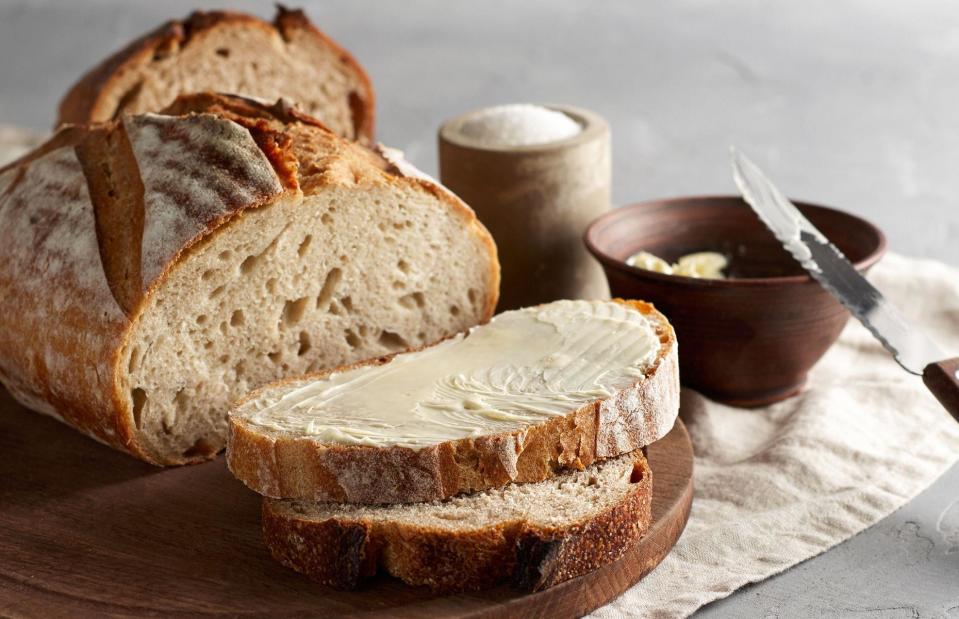
Dariia Belkina/Shutterstock
Toast tends to be the go-to option for using up slightly stale bread, but there are so many more possibilities – including freshening it up again. To revive that crusty loaf, soak it in water just until the doughy part of the bread gets slightly wet. After that, pop it in the oven for a few minutes on a high heat, and voilà! You have fresh bread again. Alternatively, stale bread makes for fantastic breadcrumbs or croutons (just store them in the freezer).
1. Pizza

Brent Hofacker/Shutterstock
Reheating pizza in the oven can result in a pie that's a little too crispy, while reheating it in the microwave can make it soggy. There's an easy way to cook it perfectly, though. To make the most of your leftover pizza, simply pop it in the microwave, but this time with a cup of hot water beside it. This will result in a crispy crust and refreshed toppings. Got a waffle iron? It's perfect for reheating individual slices – stack two slices, toppings facing inwards, and toast for about five minutes for a crispy pizza quesadilla.
Now discover 29 foods you've probably been storing incorrectly
Last updated by Laura Ellis.


